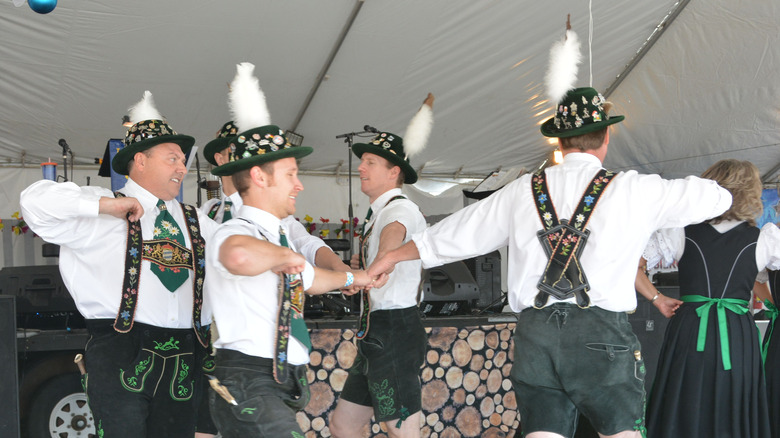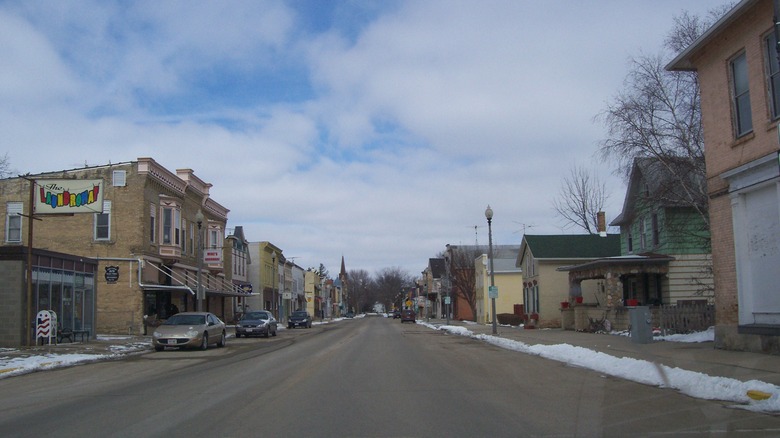Why One Wisconsin Town Didn't Learn English For Generations
The topic of language assimilation is a controversial one for many reasons. On the part of a given country's population, the adoption of their official or de-facto language by immigrants is often seen as a natural progression of becoming a citizen. Immigrants meanwhile may feel that such drastic change is forced upon them and hastens the disconnect between themselves and their homeland. In the case of the United States, the rates of immigrants who adopt English as a second or primary language have actually increased when compared to the early 20th century (via Cato Institute).
This was likely due in part to the greater isolation of individual communities, as back then other languages could be sustained for longer periods of time before the need for English became an economic necessity. Polish, Italian, and Greek are some of the more well-known languages of this time that were challenged by assimilation. For a brief time though, German was not only not subjected to the pressures of eastern and southern European languages but even embraced by non-Germans. While today it is not as common in America as others, until the 1940s there were some Americans for whom it was their only language.
In some German Hustisford households, English was totally unacceptable
The history of the German language in America at the turn of the 20th century is one riddled with both praise and xenophobia (via Re-imagining Migration). Before World War I, the large German population in America was fairly respected and schools were even opened to teach the language (via EducationWeek). During and after the war, however, anti-German sentiments exploded as the language and culture were suppressed and, in some cases, people were even horrifically attacked and murdered for speaking the language (via History.com). As the German identity largely receded during the 1910s and early 1920s, more remote places like Hustisford, Wisconsin became ever more entrenched in their decades-old way of life.
According to NPR not only were there many households that spoke both German and English, but some in this particular town even forbade the latter altogether. Where immigrant communities often become at least partly bilingual within two or three generations, it took around five generations before many of these families regularly spoke English (via Mental Floss). Ironically not only did their mother-tongue survive during this period, but many English-speakers of the town learned German themselves in order to adapt.

